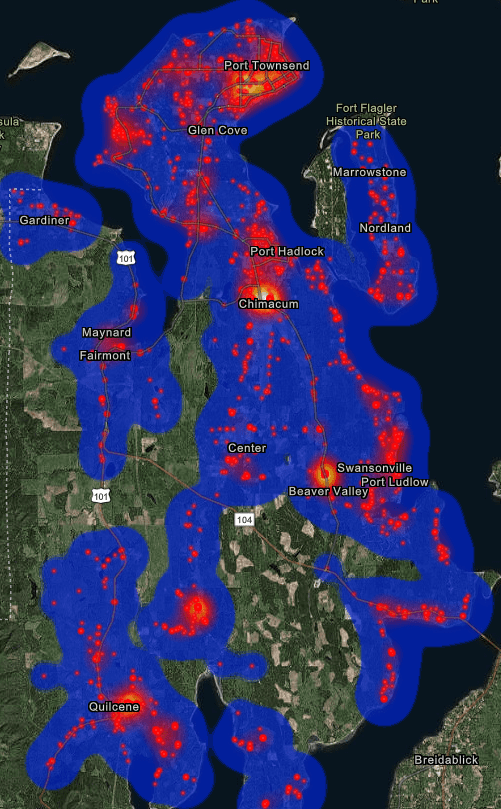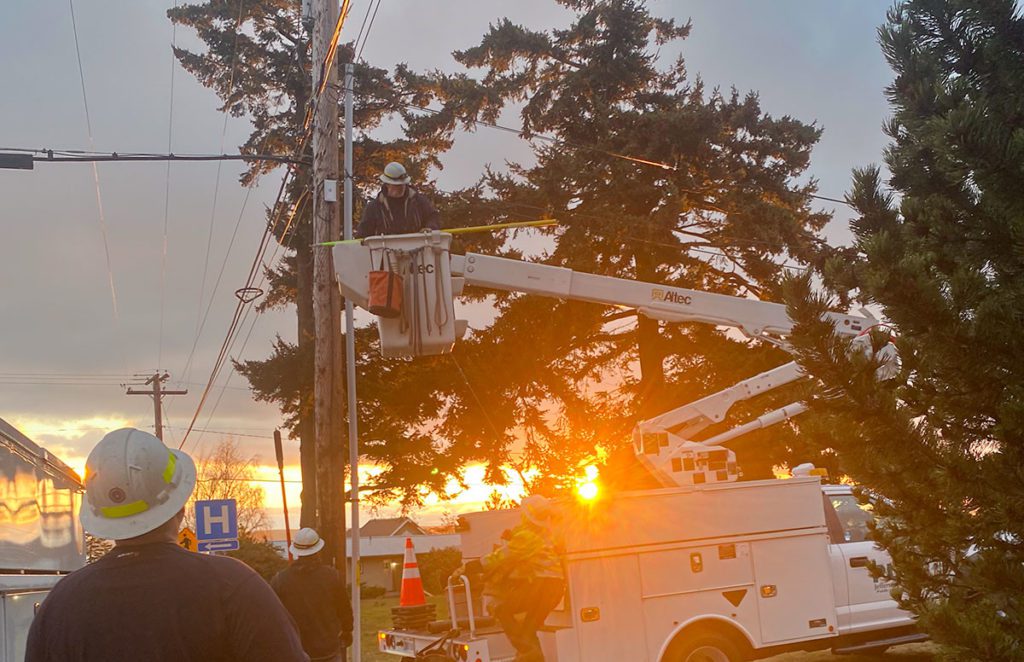SCADA: The Nervous System of our Utility

Fall season scenario: High winds pry a branch free, carrying it into nearby distribution lines. The branch lands across multiple line phases (the 3 lines atop the pole carrying 12,470 volts), resulting in a brilliant arcing.
Miles away at the closest substation a different scene takes place as the system tries to protect itself against the offending power interruption. At home these protections are clearly visible as the lights quickly blink once, twice, maybe even three times. This is the substation device testing to see if the obstruction is still on the line. If not freed, the protection device opens, and an outage occurs. A fraction of a second later a SCADA alert is triggered at the PUD.
What is SCADA?
SCADA stands for Supervisory Control and Data Acquisition. You can think of it simply as System Control acting as the central nervous system of the utility. At its core, a SCADA system collects real-time data from various sensors and devices located throughout the grid. Data ranges from voltage information during peak winter loads, to the ability for dispatchers to initiate an outage for repair work or (as is most common), and it also provides alerts to outages underway.
A fiber optic broadband network is the backbone of the SCADA system, allowing large quantities of data from around the county to be transmitted and acted upon in near real-time.
How does it work?
When an outage occurs, an alert is sent to PUD dispatch outlining the impacted equipment and general location. Dispatch alerts line crews, providing as much information as possible about the affected area: Is it primarily underground wire? Overhead? What piece of equipment sent the alert and where? With this information, line crew can assemble for the repair and, once on site, begin patrolling the line to locate the fault.
Often, the tree branch has not cleared itself and the line crew, after driving the section of line will locate it and clear it away. Once the line patrol is complete and no other obstructions are found, they call dispatch to reenergize the line. If a line has been damaged and is on the roadway, line crew relay an update to dispatch, and the section is cleared and made safe for repairs.
A Pulse on the Grid
SCADA does more than just detect outages. The information provided can help plot equipment health, and if alerts are triggered for key equipment like transformers, PUD staff can act to ensure the proper maintenance is done or a replacement is ordered. This allows staff to be proactive rather than reactive, reducing the likelihood of unexpected outages.

The Result
The goal of our SCADA system is reliability. Real-time monitoring, maintenance planning, and rapid response to outages all help improve reliability and minimize outage duration. Jefferson PUD has operated a SCADA system for nearly a decade with additional upgrades planned for 2025.